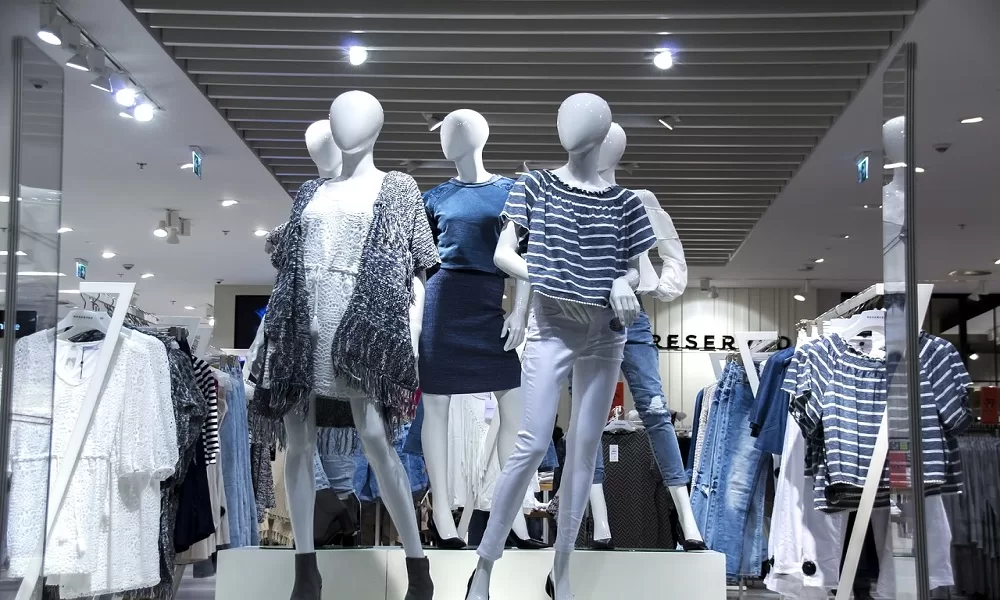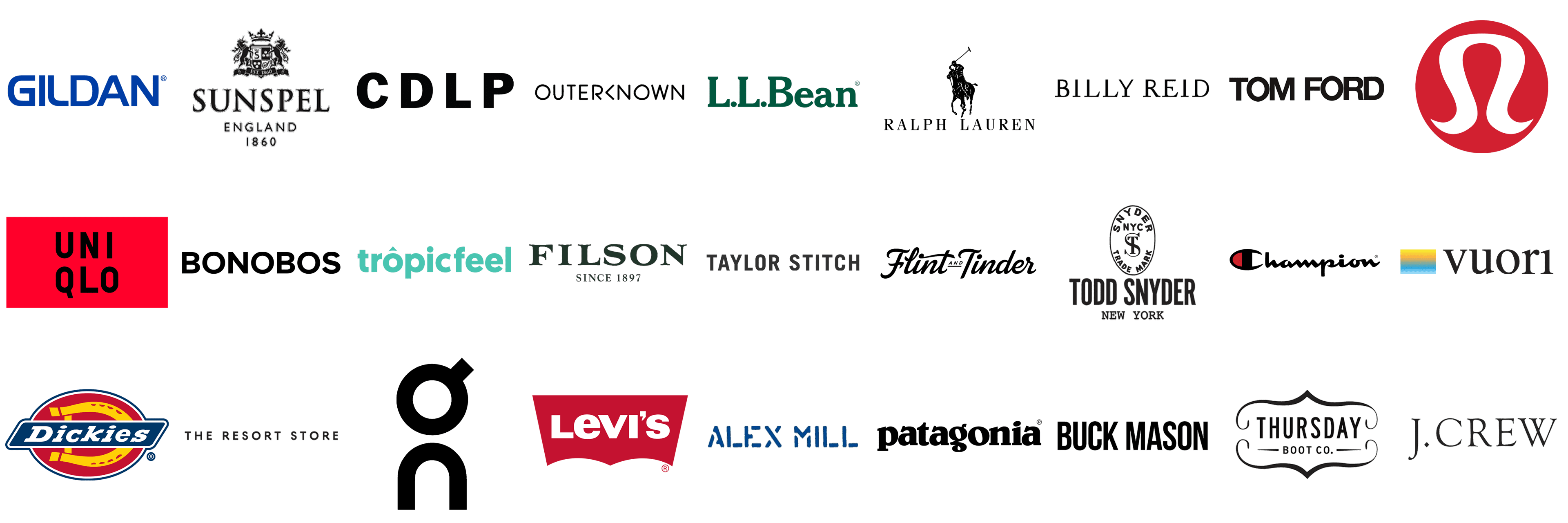What Makes Branded Clothing Ideal for Sensitive Skin?
What Makes Branded Clothing Ideal for Sensitive Skin?
Blog Article
The Importance of Sustainable Clothes: Exactly How It Affects the Setting and Your Wardrobe
Lasting clothing is increasingly acknowledged for its vital function in minimizing the environmental impact of the fast style sector. By focusing on eco-friendly products and honest manufacturing approaches, it attends to pushing eco-friendly problems. This shift not only profits the world yet additionally influences consumer choices, resulting in an extra thoughtful approach to wardrobe monitoring. Comprehending these dynamics increases important concerns concerning style's future and personal responsibility fit it.
The Environmental Impact of Rapid Fashion

Advantages of Sustainable Products
Lasting materials provide significant benefits, especially through environment-friendly textile choices that lessen ecological damage. These products additionally show durability and durability, decreasing the need for constant substitutes. Because of this, they add to an extra sustainable fashion business and promote responsible customer behavior.
Eco-Friendly Material Choices
While the fashion market has actually long been connected with quick patterns and ecological damage, the rise of eco-friendly textile options presents a transformative chance. Sustainable products such as organic cotton, hemp, and Tencel have gained popularity because of their reduced environmental influence. These fabrics are often created without unsafe chemicals and need less water, reducing their carbon footprint - Branded Clothing. Additionally, several green textiles are naturally degradable, adding to a circular economy by lessening waste. Choosing sustainable products not only supports environmentally accountable techniques but additionally advertises much healthier ecosystems. As consumers come to be extra conscious of their acquiring power, the demand for environmentally friendly fabrics encourages brands to innovate and embrace more sustainable production methods, ultimately profiting the planet and future generations
Resilience and Longevity Advantages
Lots of customers are increasingly acknowledging the longevity and durability advantages of lasting products in their clothes selections. Unlike conventional textiles, lasting products such as natural cotton, hemp, and recycled polyester are crafted to endure wear and tear, leading to garments that last longer. This decreased regularity of replacement not only conserves customers cash over time yet likewise decreases waste produced by quick style. In addition, lasting clothes often utilizes green manufacturing methods that improve material toughness, adding to a decrease in the total carbon impact. By buying long lasting garments, consumers can cultivate an extra sustainable closet while enjoying high-quality pieces that preserve their visual and capability over time. Durability and long life stand as key benefits of choosing lasting products.
Reducing Waste Via Sustainable Practices
Lowering waste in the apparel industry can be attained with cutting-edge practices such as upcycling and repurposing materials. In addition, adopting minimal closet approaches urges customers to focus on quality over quantity, ultimately reducing clothes usage. With each other, these approaches add significantly to an extra sustainable clothes version.
Upcycling and Repurposing Products
Upcycling and repurposing materials have emerged as cutting-edge methods in the fashion business, transforming thrown out textiles right into beneficial new products. This strategy not only minimizes waste but additionally encourages imagination and individuality in garments design. By taking old garments and materials, developers can develop unique items that mirror personal style while decreasing the need for brand-new resources. Furthermore, upcycling usually requires much less power and water contrasted to conventional manufacturing processes, considerably decreasing the ecological impact of fashion. As consumers become extra knowledgeable about sustainability, the appeal of upcycled garments proceeds to rise, advertising a circular economy. Eventually, these practices add to a more sustainable future, where fashion focuses on ecological health over rapid manufacturing and usage.

Minimal Wardrobe Strategies
As individuals significantly seek to lessen their environmental influence, embracing minimalist wardrobe approaches has acquired traction as a reliable strategy to sustainable fashion. These approaches stress quality over quantity, motivating consumers to curate a smaller collection of versatile, long lasting clothes. By concentrating on classic items that can be blended and matched, people can lower the regularity of purchases and inevitably lower waste.Additionally, minimalism promotes conscious consumption, advising shoppers to show on the environmental and ethical implications of their selections. This technique not just cultivates an extra lasting way of life yet additionally simplifies daily decision-making regarding clothing. As individuals accept minimalist principles, they add to a fashion society that values sustainability and accountable consumerism, inevitably bring about an extra eco-conscious society.
The Duty of Honest Labor in Sustainable Fashion
While several customers are increasingly knowledgeable about the ecological effects of their apparel selections, the relevance of moral labor practices in lasting style can not be ignored. Moral labor encompasses fair salaries, risk-free working conditions, and regard for employees' rights, developing the foundation of liable style production. Brand names that prioritize honest labor not just boost neighborhoods however additionally established a criterion for responsibility in the industry.Moreover, the combination of ethical methods fosters transparency, enabling consumers to make informed selections regarding their purchases. This technique contrasts dramatically with fast fashion's exploitative labor designs, which frequently focus on earnings over people. By supporting firms devoted to honest labor, consumers contribute to a system that values human self-respect together with ecological sustainability. As a result, ethical labor is not simply an add-on; it is important to the wider objective of lasting fashion, guaranteeing that the mission for eco-friendliness does not come with the expense of civils rights.
The Influence of Sustainable Clothing on Carbon Emissions
Sustainable garments has the possible to substantially reduce carbon emissions connected with the fashion market. Traditional garment production contributes notably to greenhouse gas discharges, mainly because of energy-intensive production processes and using non-renewable sources. On the other hand, lasting fashion concentrates on eco-friendly products, such as natural cotton or recycled fibers, which typically call for much less power to produce.Moreover, sustainable brand names tend to take on more reliable production practices, reducing waste and lowering general exhausts. By prioritizing longevity and ageless style, sustainable clothing urges customers to buy less often, more minimizing the carbon impact linked with overconsumption.Additionally, lots of sustainable brands are devoted to openness in their supply chains, enabling customers to make enlightened selections that straighten with their values. Ultimately, moving towards sustainable clothes can result in a substantial reduction in carbon exhausts, contributing to a much healthier planet and a more lasting future for the apparel industry.
Supporting Regional Economic Situations With Lasting Selections
The change toward sustainable clothing not only addresses ecological concerns but additionally substantially benefits regional economic situations. By choosing lasting style, consumers frequently support local artisans and small companies, improving neighborhood resilience. These enterprises normally operate a smaller sized range, focusing on workmanship and moral techniques over mass production.Investing in locally made sustainable apparel cultivates job production and promotes economic growth within neighborhoods. As visit our website customers become extra familiar with the ecological impact of their acquisitions, they progressively choose items that mirror their values. This need encourages regional suppliers to adopt sustainable practices, adding to a round economy.Moreover, supporting neighborhood companies minimizes transportation discharges, aligning with eco-conscious consumer habits. The interconnectedness of lasting clothes and regional economic situations underscores the essential function that private options play in advertising both economic and environmental health and wellness. By fostering these regional links, areas can grow while additionally functioning towards an extra lasting future.
Changing Your Storage Room: Tips for a Lasting Closet
As people look for to decrease their ecological impact, transforming a storage room right into a lasting wardrobe comes to be an essential step. One effective technique is to examine existing apparel, keeping just things that are used frequently which line up with sustainability goals. Focusing on quality over quantity is important; purchasing durable items from environment-friendly brands can greatly reduce waste.Additionally, integrating pre-owned items can breathe new life into a wardrobe while reducing ecological damages. Organizing clothing swaps with pals or contributing unused things can even more advertise sustainability.When purchasing, people need to look for materials that are natural, recycled, or biodegradable, and prevent quick fashion merchants - Branded Clothing. Ultimately, practicing mindful usage by thoughtfully taking into consideration each purchase can contribute to a much more sustainable way of living. By executing these tips, one can produce a closet that shows individual her latest blog style while supporting ecological stewardship
Frequently Asked Questions
Exactly How Can I Recognize Sustainable Clothes Brands?
To identify lasting apparel brand names, one should investigate materials made use of, examine for certifications like Fair Profession, and check out the brand name's transparency concerning their production processes, labor practices, and environmental influence, making sure green and moral practices are prioritized.
What Are the Costs Associated With Sustainable Style?
The prices related to lasting style can differ significantly. Higher production expenses, moral sourcing, and eco-friendly products commonly bring about increased market prices, which might discourage some customers while appealing to environmentally mindful customers.
Can Lasting Clothes Be Elegant and Stylish?
Sustainable clothes can undoubtedly be elegant and trendy. Designers significantly focus on cutting-edge materials and moral production methods, confirming that style and sustainability can exist together. Customers now have varied alternatives that mix appearances with environmental consciousness.
Just How Does Laundering Garments Affect Their Sustainability?
Cleaning clothing substantially effects sustainability by consuming water and energy, adding to pollution, and creating microplastic release. Regular cleaning can degrade textiles, shortening their lifespan and raising the need for replacements, ultimately worsening environmental worries.
What Is the Lifespan of Lasting Clothes Compared to Fast Fashion?
The lifespan of lasting clothes generally goes beyond that of quick style items, usually long-term numerous years as a result of top quality materials and workmanship. On the other hand, rapid style garments may degrade quickly, necessitating even more regular substitutes. Lasting garments is increasingly identified for its critical role in minimizing the environmental influence of the fast fashion sector. While lots of customers are significantly conscious of the environmental repercussions of their clothes choices, the importance of honest labor practices in lasting style can not be forgotten. Branded Clothing. Sustainable clothes has you could try these out the prospective to significantly reduce carbon emissions associated with the fashion sector. In contrast, sustainable style focuses on eco-friendly products, such as organic cotton or recycled fibers, which frequently require less energy to produce.Moreover, sustainable brand names have a tendency to embrace more effective manufacturing practices, lessening waste and decreasing total discharges. By prioritizing sturdiness and classic design, sustainable clothes urges consumers to get less regularly, further lowering the carbon impact connected with overconsumption.Additionally, many sustainable brands are committed to transparency in their supply chains, allowing consumers to make educated selections that align with their values
Report this page